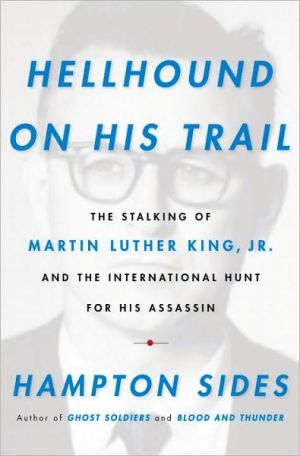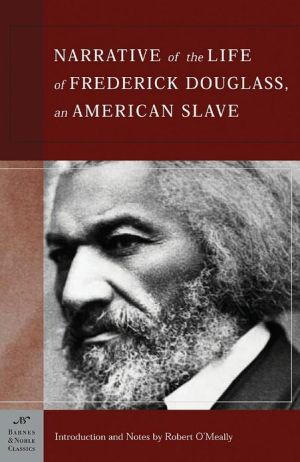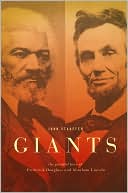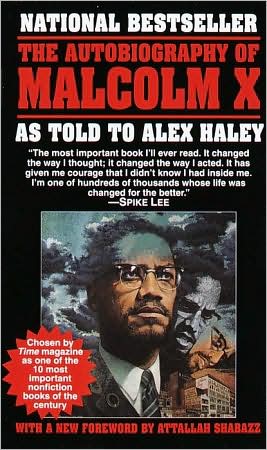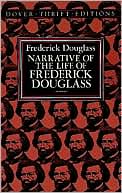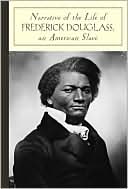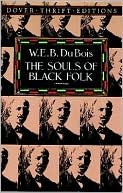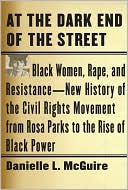Hellhound on His Trail: The Stalking of Martin Luther King, Jr. and the International Hunt for His Assassin
"On April 23, 1967, Prisoner #416J, an inmate at the maximum-security Jefferson City Penitentiary in Missouri, stuffed himself into a bread-filled metal box bound for the prison farm workers. He became the first man to successfully escape in the institution's 131-year history. Fashioning himself Eric Galt, this nondescript thief and con man drifted through the American South, down into Mexico, and then to Los Angeles. His dream was to become a director of porn films." "On February 1, 1968, in...
Search in google:
From the acclaimed bestselling author of Ghost Soldiers and Blood and Thunder, a taut, intense narrative about the assassination of Martin Luther King, Jr., and the largest manhunt in American history. On April 23, 1967, Prisoner #416J, an inmate at the notorious Missouri State Penitentiary, escaped in a breadbox. Fashioning himself Eric Galt, this nondescript thief and con man—whose real name was James Earl Ray—drifted through the South, into Mexico, and then Los Angeles, where he was galvanized by George Wallace’s racist presidential campaign. On February 1, 1968, two Memphis garbage men were crushed to death in their hydraulic truck, provoking the exclusively African American workforce to go on strike. Hoping to resuscitate his faltering crusade, King joined the sanitation workers’ cause, but their march down Beale Street, the historic avenue of the blues, turned violent. Humiliated, King fatefully vowed to return to Memphis in April. With relentless storytelling drive, Sides follows Galt and King as they crisscross the country, one stalking the other, until the crushing moment at the Lorraine Motel when the drifter catches up with his prey. Against the backdrop of the resulting nationwide riots and the pathos of King’s funeral, Sides gives us a riveting cross-cut narrative of the assassin’s flight and the sixty-five-day search that led investigators to Canada, Portugal, and England—a massive manhunt ironically led by Hoover’s FBI. Magnificent in scope, drawing on a wealth of previously unpublished material, this nonfiction thriller illuminates one of the darkest hours in American life—an example of how history is so often a matter of the petty bringing down the great.The Barnes & Noble ReviewThe first thing that gets you is how smart and how witless the criminal was, both at once. Prisoner 416-J -- as he is initially known, and sequentially by several aliases, until he emerges near the end as his own contemptible self -- managed in 1967 to pull off the first escape in the history of the maximum-security Missouri State prison. Subsequently committing a far more audacious, deadly, and despicable crime than the armed robbery he had been in for, he escaped from another maximum-security facility in Tennessee after having evaded, for a time, the widest FBI manhunt to date. It would be hardly credible in a James Bond movie. Yet he was also patently dumb -- not to mention a loose cannon of a sociopath, responsible for taking the life of one of the great civil rights heroes of all time -- and so the story of James Earl Ray is, from beginning to end, a profound head-slapper.
Chapter 1\ City of White Gold\ In early May 1967, three hundred miles downstream from St. Louis, the citizens of Memphis stood along the cobblestoned banks, enjoying the musky coolness of the river. Seventy-five thousand people, dressed to be seen, waited in the twilight. They’d come from all the secret krewes —from the Mystic Society of the Memphi, from Osiris and RaMet and Sphinx. They’d come from all the clubs—Chickasaw, University, Colonial, Hunt and Polo, the Memphis Country Club—and from the garden societies. The good families, the old families, in their finest James Davis clothes, bourbon flasks in hand, assembled for the start of the South’s Greatest Party.\ The brown Mississippi, wide with northern snowmelt, was a confusion of crosscurrents and boils. In the main channel, whole trees could be seen shooting downstream. A mile across the river lay the floodplain of Arkansas, a world of chiggers and alligator gars and water moccasins that lived in swampy oxbow lakes. On the long sandbars, feral pigs ran among graveyards of driftwood and rotten cypress stumps.\ But in the clearings beyond these wild margins were hundreds and hundreds of miles of cotton fields. Cotton as far as the eye could see, row after perfect row. Gossypium hirsutum. White gold, mined from the world’s richest alluvium.\ Memphis was built on the spot where the Spanish explorer Hernando de Soto, in 1541, became the first European to lay eyes on the Mississippi River. The city was founded 278 years later by Andrew Jackson and a group of his investor cronies, and named for the ancient Egyptian capital near the Giza pyramids. Memphis didn’t really take off, however, until the dense hardwood forests along the river began to be cleared in the mid-nineteenth century, finally making farmable the flat, rich floodplain known as the Mississippi Delta. As the country slid toward Civil War, Memphis became the capital of a region that was constructing a last frenzied iteration of Southern planter society. If the Delta came late to cotton, it came to it with a vengeance, and with all the defiant desperation of someone following a wounded creed.\ Cotton had grown along the Nile near the original Memphis, and cotton was what modern Memphis had come to celebrate on this fine humid evening of May 10, 1967. In the fields of Arkansas, and down in nearby Mississippi, the little darlings had already begun to push through the dirt, the crop dusters were preparing to rain down their chemicals, and the old true cycle was in the offing. Now it was time for Memphians to pay homage and to bless another season in cotton’s splendid realm.\ The thirty-third annual Cotton Carnival, Memphis’s answer to Mardi Gras, was about to begin. Later in the week, there would be luncheons, trade shows, and charity balls. A beauty contest would declare the fairest Maid of Cotton. Many thousands would visit the giant midway and attend parades with elaborate floats, some of them spun from cotton, depicting the gone-but-not-forgotten Old South and the treachery of the long-snouted boll weevil. All week there would be parties on the rooftop of the Peabody Hotel, where mallard ducks lived in a scaled-down mansion when they weren’t marching down a red carpet to splash around in the lobby fountain.\ Tonight was the high pageant that kicked off the whole week—the majestic arrival of the King and Queen, sitting upon their thrones with their sequined court all around them, on a great glittery barge that was scheduled to nudge into the Memphis harbor shortly after sunset. It was a celebration not only of cotton but also of the peculiarly settled life that thrived on it—the life of dove hunts and pig roasts and debutante balls, the genteel agrarian world that could still be found in the fertile realms surrounding Memphis.\ Cotton, cotton everywhere. Crane operators, hoisting dozens of five- hundred-pound cotton bales, had constructed colossal arches that spanned the downtown streets. All attendees were urged to wear cotton, and they did: party girls in crinoline dresses, dandies in seersucker suits, children in starched oxford cloth. People even ate cotton candy while they waited with the crowds for the Royal Barge to arrive.\ Representatives from all echelons of the Delta cotton world had joined the masses on the river—the factors, the classers, the ginners, the brokers, the seed sellers, the plantation owners, the compress owners,\ the board members of the Cotton Exchange, the loan officers from the Union Planters Bank, the chemical engineers who’d learned how to tease out the plant’s oils and secret compounds for every industrial purpose Mammon could devise.\ Cotton’s presence, and cotton’s past, could be felt everywhere along the shadowed waterfront. Behind the cheering crowds, high on the magnolia-lined bluff once occupied by Chickasaw Indians, sat Confederate Park, with its bronze statue of Jefferson Davis, who’d made his home in Memphis after the Civil War. A block from the park was the place on Adams Avenue where Nathan Bedford Forrest once operated a giant slave market, said to be the South’s largest, that boasted “the best selected assortment of field hands, house servants, and mechanics . . . with fresh supplies of likely Young Negroes.”\ Running lengthwise along the same bluff lay Front Street, cotton’s main drag. In the upstairs classing rooms, sharp-eyed savants still graded cotton samples by pure intuition under north-facing skylights— judging according to quaint industry distinctions like “strict low middling” or “strict good ordinary.” Memphis remained one of the largest cotton markets in the world, with massive fortunes made and lost and made again. Many of the names were legends—Dunavant, Cook, Turley, Hohenberg, Allenberg—high rollers in a vaguely druidic enterprise. In October, during harvest time, the skies above Front Street still swirled with snows of lint.\ Cotton cotton cotton. Memphis couldn’t get enough of it. Cotton was still king. It would always be king.\ n\ In truth, though no one wanted to talk about it on that roistering night in 1967, the old world of Delta cotton was in serious trouble. Life on the plantations had changed so fast it was hardly recognizable. Soybeans had made inroads as the new mono-crop of choice. Polyester had encroached upon the American wardrobe. Massive mechanized cotton pickers, along with new soups of pesticides and herbicides, had rendered largely obsolete the life of the Delta sharecropper. Thus demoted by petrochemicals and machines, many thousands of black field hands and their families steadily left the plantations over the decades and came to Memphis—the nearest city, and the only American city of any size named after an African capital.\ Other than mule skinning or chopping cotton, though, most Delta field hands had little in the way of marketable skills when they came to the city. Some found success playing the blues on Beale Street—the central thoroughfare of black Memphis. But most settled into low-end jobs that merely recapitulated the racial and socioeconomic hierarchy they’d known on the plantations. Many became maids, janitors, waiters, yardmen, cooks, stevedores. Some had no choice but to take the lowest- end job of all: they reported to the Public Works Department and became garbagemen.\ At least they’d come to a city with a history that was rich and gothic and weird. Memphis, this city of 600,000 people wedged in the southwestern crotch of Tennessee, had always had a touch of madness but also a prodigious and sometimes profane sense of humor. It was a town known for its outlandish characters and half-demented geniuses: wrestlers, riverboat captains, inventors, gamblers, snake-oil salesmen, musicians high on some peculiar native vibe that could be felt but whose existence could not be proved. For 150 years, all the pain and pathos of the river seemed to wash up on the cobblestoned banks. In 1878, the city was nearly completely destroyed by a yellow fever epidemic, but the Metropolis of the American Nile had recovered, madder and stranger and more full of brawling ambition than ever. Memphis, as one writer famously put it, “was built on a bluff and run on the same principle.”\ It was a city that, since its very inception, had been perched on the racial fault line. The first mayor, Marcus Brutus Winchester, created a major scandal by falling for, and eventually marrying, a “woman of color.” One of the area’s most fascinating citizens in the late 1820s, a Scottish-born utopian named Fanny Wright, created an experimental commune of slaves whom she sought to educate and bring into full citizenship. Several generations later, Memphis gave the world Ida B. Wells, an early titan of the civil rights movement, a woman of profound courage who, in the 1890s, repeatedly risked assassination with eloquent protests against lynching. Then there was the ever- cryptic Mr. Forrest, who quit his slave mart and took up a sword in the Civil War, becoming one of the most wickedly brilliant generals in American history. After the war he returned to Memphis, where, after briefly serving as the first Grand Wizard of the Ku Klux Klan, he apparently experienced an epiphany—renouncing the Klan with seeming genuineness and calling for racial reconciliation shortly before his death.\ But music was the city’s greatest gift and particular genius: the blues of W. C. Handy’s Beale Street, the soul of Stax Records, and a certain interracial sound stew that a redneck wizard named Sam Phillips cooked up in a tiny studio on Union Avenue, less than a hundred yards from where Forrest lay buried. At its essence, the music of Memphis was about the fecund intermingling of black and white. Elvis Presley, coaxed and prodded by Phillips, found a way to transmute the raw sound of Beale Street into something that would resonate across the world. The stars, white and black, who had passed through the studios and nightclubs of Memphis were as numerous as they were legendary: not just Elvis, but Rufus Thomas, Johnny Cash, B. B. King, Albert King, Carl Perkins, Ike Turner, Jerry Lee Lewis, Carla Thomas, Isaac Hayes, Roy Orbison, Muddy Waters, Howlin’ Wolf, Otis Redding, John Lee Hooker, Memphis Minnie, Memphis Slim. The phantom- like Robert Johnson, perhaps the greatest of the Delta bluesmen, lived in and around Memphis much of his short, tragic life. It could be argued that over the decades, Memphis’s musical ferment had done more to integrate the country than a hundred pieces of legislation.\ In a way, cotton was at the center of the ferment, for cotton had spawned the blues, and cotton had built the city that gave the blues its first wider expression. But there was no mistaking the fact that most black folks in Memphis were good and done with cotton, and they hated most everything about the hairy prickly shrub that had so long enslaved them. Certainly not many black people were to be found on the banks of the river on that May night in 1967, awaiting the arrival of the Royal Barge.\ n\ The skies over Arkansas ripened to a final brilliant red before closing into darkness. It seemed as though the sun had literally buried itself in cotton fields. An orchestra played strains of Vivaldi, and the heavens crackled with fireworks.\ Then, from under the bridge, the dazzling vessel slipped into view, with the crowds gasping in wonder. At first it was just a burst of bright light, a diaphanous vision floating out on the currents. As it drew nearer to the harbor, the ravishing details began to emerge. The barge was the size of a football field, with a giant art deco cotton boll rising over the sparkling set. Egyptian motifs were woven into the decorations—pyramids, sphinxes, hieroglyphics: the Old South meets the land of the pharaohs.\ Seated on their thrones high up in the towering boll were King Joseph and Queen Blanche, 1967’s monarchs, wearing their crowns, holding their scepters. As always, they’d been chosen in secret, by some obscure protocol known only to the Mystic Society of the Memphi. As always, he was an older man, a business potentate, while she was a nubile paragon of Southern pulchritude, college aged and presumably a virgin. They were blindingly white people, in blindingly white clothes, sitting high in their resplendent perch. In unison, they cupped their gloved hands and gave the crowds tiny swiveling waves, as if to say, Here we are! . . . There you are! . . . We’re all here!\ More than a hundred people made up the royal court, all posed together on the barge like the largest wedding party ever assembled. There were the duchesses, the counts, the pages, the princesses and their tuxedoed escorts. There were the young girls, who curtsied with labored formality and attended the train of Her Majesty’s gown. There were the weevils, the masked green jesters whose identities were unknown. On one side of the Royal Barge stood the Ladies of the Realm— belles from plantation towns all over the Mississippi Delta. On the other side were the Ladies-in-Waiting—belles from the city, from good families, and of marriageable age.\ The court moved about the barge in a carefully choreographed promenade. Everyone was smiling, bowing, waving, beaming. “Don’t get wise with me,” the king warned, “or I’ll have you all beheaded.” When the music reached a fever pitch, King Joseph and Queen Blanche rose and took a bow. All along the bluff, the seventy-five thousand loyal subjects erupted in thunderous cheers: Hail, King Cotton and His Queen!\ Then, in a swirl of lights, the court began to parade off the stage, and off the barge, and onto the old cobblestones, the royals closely gaurded by uniformed young men dressed as Confederate colonels. Like Peabody ducks, the revelers strutted down a long red carpet to a waiting convoy of Cadillac convertibles and were whisked away to the first parties of the season.
Prologue: #416-J 1Bk. 1 In the City of the Kings 11Bk. 2 Who Is Eric Galt? 229Bk. 3 The Hottest Man in the Country 323Epilogue: #65477 385Acknowledgments 399A Note on Sources 403Notes 407Bibliography 449
\ Janet Maslin…a viscerally dramatic account of the last days of the Rev. Dr. Martin Luther King Jr.…Remarkably, [Sides] has embroidered the facts without losing a sense of veracity. He augments the truth, but he does it responsibly. He skirts certain issues, like the question of whether or not Ray acted alone, without losing his sharp focus. And he brings to life the story of Dr. King's last days without bogging it down in too many small particulars. Both Dr. King and Ray come to life in these remarkable pages, generating great suspense without surprise, thanks to readers' terrible foreknowledge of what will happen when these two cross paths.\ —The New York Times\ \ \ \ \ David J. Garrow[Sides's] depiction of his home town's role in the story is enlightening, and his efforts to present King's struggles and the FBI's behavior cover familiar ground with hardly a misstep…But the "hellhound" who rightly remains the book's centerpiece…is of course Ray…Sides draws a memorable and persuasive portrait of the amateur assassin whose motivation may be simpler to grasp than most previous investigators have realized.\ —The Washington Post\ \ \ Publishers WeeklyThe counterpoint between two driven men—one by a quest for justice, the other by an atavistic hatred—propels this engrossing study of the King assassination. Sides, author of the bestselling Ghost Solders, shows us a King all but consumed by the flagging civil rights movement in 1968 and burdened by presentiments of death. Pursuing him is escaped convict James Earl Ray, whose feckless life finds a belated, desperate purpose, perhaps stimulated by George Wallace’s presidential campaign, in killing the civil rights leader. A third main character is the FBI, which turns on a dime from its long-standing harassment of Kingto a massive investigation into his murder; in Sides’s telling, the Bureau’s transoceanic hunt for Ray is one of history’s great police procedurals. Sides’s novelistic treatment registers Ray as a man so nondescript his own sister could barely remember him (the author refers to him by his shifting aliases to emphasize the shallowness of his identity). The result is a tragedy more compelling than the grandest conspiracy theory: the most significant of lives cut short by the hollowest of men. Photos. (Apr. 27)\ \ \ \ \ Publishers WeeklySides delivers an arresting account of the last days of Martin Luther King Jr. and the hunt to capture his killer, James Earl Ray. Sides provides not just a clear history of events, but a gripping narrative that puts readers into the room with key people including King, Ray, and J. Edgar Hoover. The author reads with a clear and strong voice that keeps a good pace and agreeable rhythm. He slips easily into the accents and only marginally invokes the speaking styles of different famous people's voices (including King himself), thereby reminding listeners of who is speaking but without hammy mimicry. While his narration is not as enthralling as the action itself, Sides maintains a solid rhythm and projection throughout. A Doubleday hardcover (Reviews, Feb. 8). (May)\ \ \ \ \ The Barnes & Noble ReviewThe first thing that gets you is how smart and how witless the criminal was, both at once. Prisoner 416-J -- as he is initially known, and sequentially by several aliases, until he emerges near the end as his own contemptible self -- managed in 1967 to pull off the first escape in the history of the maximum-security Missouri State prison. Subsequently committing a far more audacious, deadly, and despicable crime than the armed robbery he had been in for, he escaped from another maximum-security facility in Tennessee after having evaded, for a time, the widest FBI manhunt to date. It would be hardly credible in a James Bond movie. Yet he was also patently dumb -- not to mention a loose cannon of a sociopath, responsible for taking the life of one of the great civil rights heroes of all time -- and so the story of James Earl Ray is, from beginning to end, a profound head-slapper.\ It is also, as structured by Hampton Sides, author of the well-received histories Blood and Thunder and Ghost Soldiers, a vigorously paced narrative of a murder that shocked the world, as well as a trenchant depiction of a place -- Memphis, Tennessee -- that even for sixties America seems bizarrely alien. The bullet from Ray's rifle that struck Martin Luther King, Jr. as he stood on a balcony at the Lorraine Motel cut down a recklessly courageous advocate for racial equality. At the same time, it helped blast to a sudden end an ethos of almost medieval stratification in the Old South.\ Memphis was not simply the place where someone famous happened to be murdered; it was a worldview. By Sides's adroit account, this could not have happened anyplace else. Or, if it could, it would have had to have been in a town similarly cooking in the heat from the fires of acrimony that burned all over the United States in the late sixties. It would also have had to have been overtaken by the exact series of events that made the proponent of nonviolence feel the need to return to Memphis, against the wishes of his advisers, to try to keep the lid from blowing off the pot.\ Many arbitrary stars need to align for an assassination to occur, and the first to blink into sight here was an otherwise local event: the exceptionally horrible deaths of two black sanitation workers in East Memphis, crushed by their faulty, antiquated truck. None of the workers -- or their survivors, when it came to that -- had recourse, power, compensation, or (needless to say) a union.\ As Sides perceptively writes,\ \ The "tub-toters" of the Public Works Department were little better off than sharecroppers in the Delta, which is where they and their families originally hailed from. In some ways they still lived the lives of field hands; in effect, the plantation had moved to the city. . . . All week long, they quietly haunted the neighborhoods of Memphis, faceless and uncomplaining, a caste of untouchables. They called themselves the walking buzzards.\ \ But they did not aim to sustain a wordless watch at the borders of the refuse pile any longer. They organized, then called a strike. The clean fabric of the city with its own plantation-era monarchy, celebrated at an annual Cotton Carnival, was starting to show stains. The heat was now building, and soon it would be fanned into flame by the placards of the striking workers, which read, "I AM A MAN."\ On March 28, 1968, King went to Memphis to lead a march of these sick and tired. It turned into a debacle, the type that King most feared: riven with angry violence. He decided to return within a week, to lead a much larger, and hopefully peaceful, demonstration. He envisioned it as a kickstart to his grandly scaled Poor People's Campaign, planned later to descend on Washington, D.C.\ Since we already know what happened within a week, the only technique left to the author who wishes to fully dramatize a tragedy -- the cold stars aligning one by one, the forces moving inexorably from opposite sides of the stage to their fateful collision in the middle -- is intercutting. It is highly effective. As used in Hellhound, the wayward wanderings of Ray -- aka Eric Galt, aka Ramon George Sneyd, aka Harvey Lowmeyer -- alternate with the more purposeful movements of King, in addition to those of what one might be tempted to consider the story's other criminal: J. Edgar Hoover. (Sides reports that Hoover, upon learning MLK was named Time's "Man of the Year" for 1963, obscenely commented, "They had to dig deep in the garbage to come up with that one.") It is but one of a few too many ironies of this vicious business that King's sworn enemy would later become responsible for sending half his 6,000 agents on a nine-week, $2-million dollar search for his killer.\ After the assassination, Ray managed to cross the border (rather easily) into Canada. Then, with the FBI a ways back on the trail, he flew to Europe, en route, or so he hoped, to armed heroism as a mercenary in Rhodesia. He was finally captured, in London, by virtue of a British detective's hunch; for a moment, it looked as though he would get entirely away. Which is what he proceeded to do, a few months after being locked tight inside another "escape-proof" pen.\ Although Hellhound on His Trail is exuberantly detailed -- the author is as skilled with research as he is with muscular prose -- the reader might feel nagged by one omission, a crucial one. What could possibly have motivated this small-time crook to stalk and kill a man of the stature of Martin Luther King, Jr.? To be sure, he was a racist (among those he looked up to were Hitler and George Wallace); but so were many southern whites of the time. And then you see it, not trumpeted but reading like hard, sad truth: the reason was no reason. Circumstance, only that. Ray, whose highest aspiration was to direct porn films, was the sorry product of a sordid family life with a "hundred-year history of crime and squalor and hard luck." There was nothing like a real ideology that sent James Earl Ray disastrously into the path of an inspiring, effective, and desperately needed leader; he was intellectually incapable of that. Rather, it was pre-existing anger and hate -- internal states that went free-floating into the ether of a time that was chemically favorable to them. There was unloosed anguish over the Vietnam War; there were race riots that brought up the bile of fear in white throats. It turned out to be a particularly rich period for assassination.\ --Melissa Holbrook Pierson\ \ \
